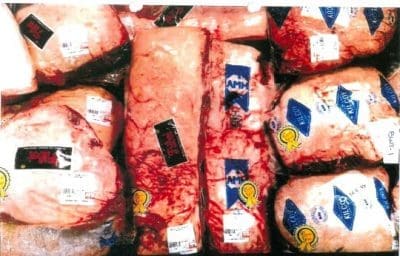Shelf life has always been important in the meat trade, as importers in overseas markets request proof of exporter claims about how long their products will remain saleable.

Temperature has the largest impact on the shelf life of product by far, which means controlling temperature and the cold chain gives the best assurance of a long shelf life. However, a short period of temperature abuse may not have a significant impact on the product.
Previously, the shelf life of a product based on its temperature throughout shipment has been hard to calculate, but new work from MLA to develop a shelf life prediction tool has changed that narrative.
When combined with real-time temperature data loggers, this has the opportunity to deliver huge profits and new guarantees of quality for industry on every shipment of Australian red meat.
More accurate shelf life estimates
MLA, in collaboration with the University of Tasmania, has developed a shelf life calculator, which estimates shelf life of vacuum-packed beef and sheep primals.
The tool can be used to predict a product’s remaining shelf life providing you know the approximate bacterial levels (TVC) at packing and the time/temperature record during storage via data logger devices.
MLA funded numerous trials with processors using various data loggers available on the market for their usability, training requirements and ease of analysing the data through the shelf life calculator.
The concept of actively monitoring and managing the cold chain was explored, and it was revealed that industry can expect significant returns on investment from the uptake of real time logging and the shelf life calculator to manage red meat shipments.
Benefits to industry
The greatest benefit with real-time logging is that it gives product owners confidence in the cold chain, and for potential issues to be managed promptly without negatively impacting the product or customer.
Additional benefits from implementing real-time logging include:
- the data is available 24/7
- very easy to implement and change from current practice
- data can be used to defend against product claims – processors reported logging works out to be about $1,456 in claims per shipment, or $0.08/kg
- air freight is more susceptible to shelf life loss than sea freight
- 1.2% of sea freight on arrival to the importing country has lost greater than two weeks’ shelf life more than expected from the shipping time
- currently 10% of cold stores cause product to lose shelf life twice as fast as expected.
How to start logging
Real-time logging is easy to implement, and the return on investment can be repaid with excess by saving just one bad shipment, which is usually worth more than $150,000.
The cost of loggers ranges from $50–$80, and purchasers can expect providers to help with the initial implementation.
Additionally, some of the companies providing real-time loggers are also implementing MLA’s shelf life calculator into their dashboards to provide real-time data on shelf life during shipments. These dashboards tell exporters of any changes in temperature as they occur, enhancing both quality and profits.
Source: Meat & Livestock Australia. For more information on the shelf life calculators and data loggers, contact MLA’s Project Manager – Food Safety & Market Access, Long Huynh at lhuynh@mla.com.au.
